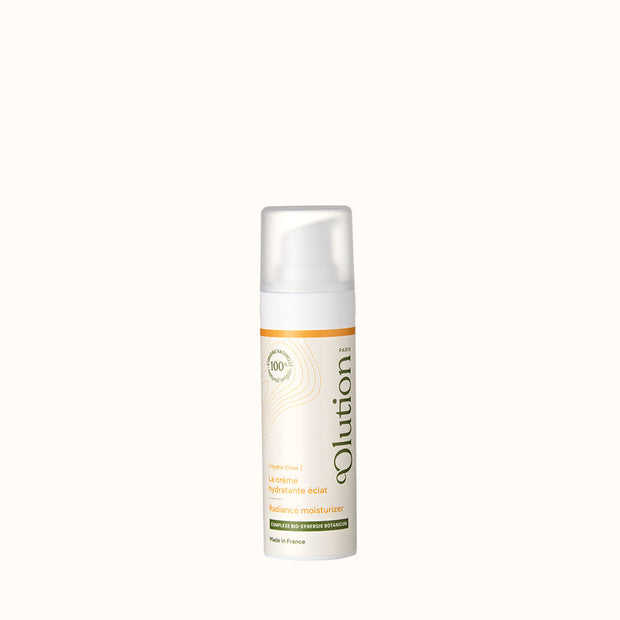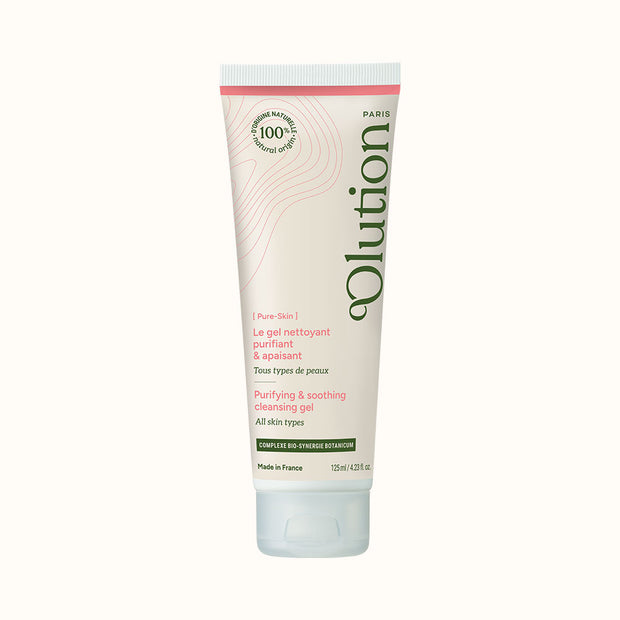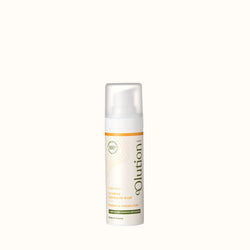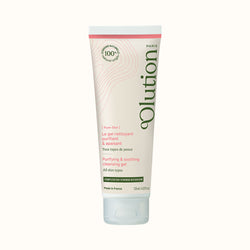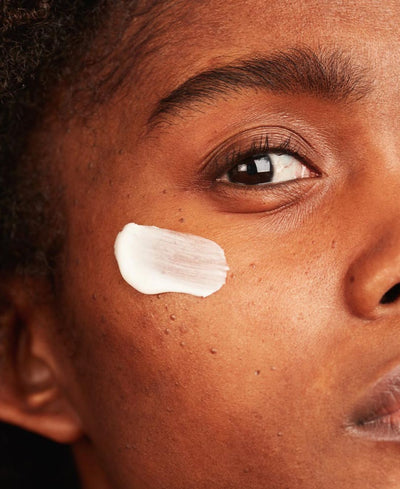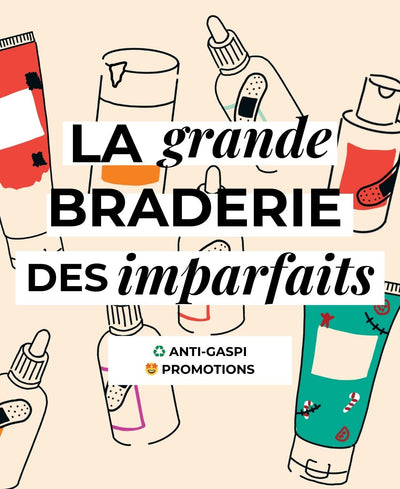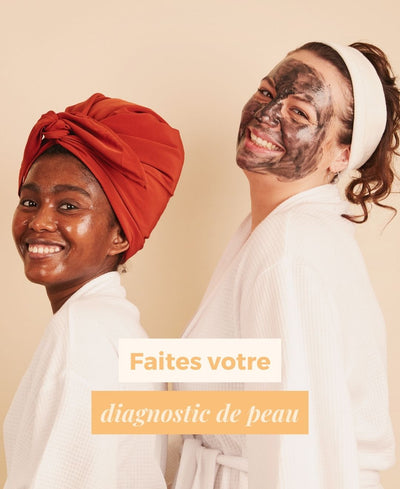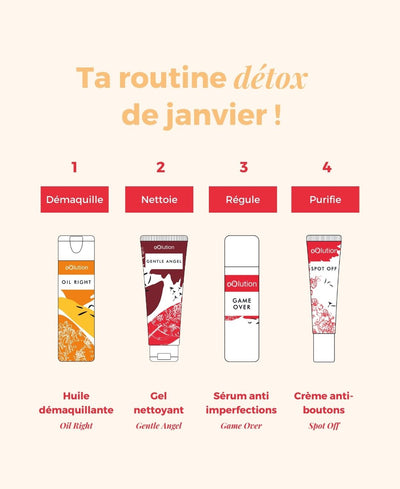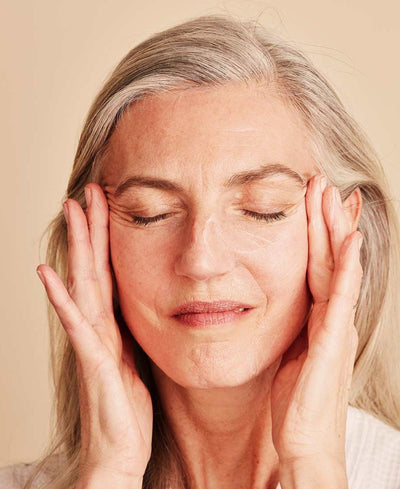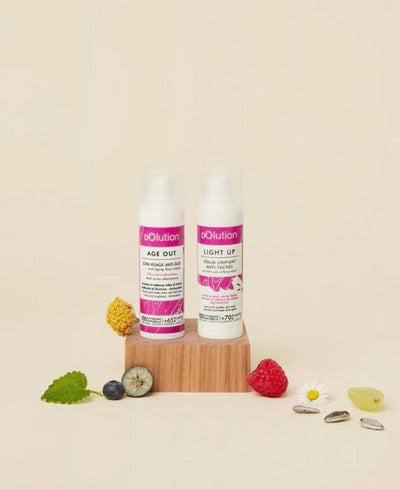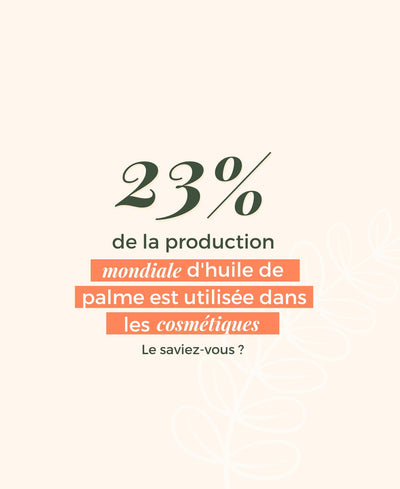You were promised the end of pimples on the face after adolescence, once you're an adult, but they've decided to take up residence there. Hearts up, you're not alone⸱e: in France, according to studies, almost half of women over the age of 20 claim to suffer regularly from pimples on the face, in various forms and degrees of severity. And solutions exist to get rid of them, or at least attenuate them.
The most common causes of pimples on the face in adulthood, natural solutions to regain healthy skin, routines to set up around a balancing serum we explain it all.
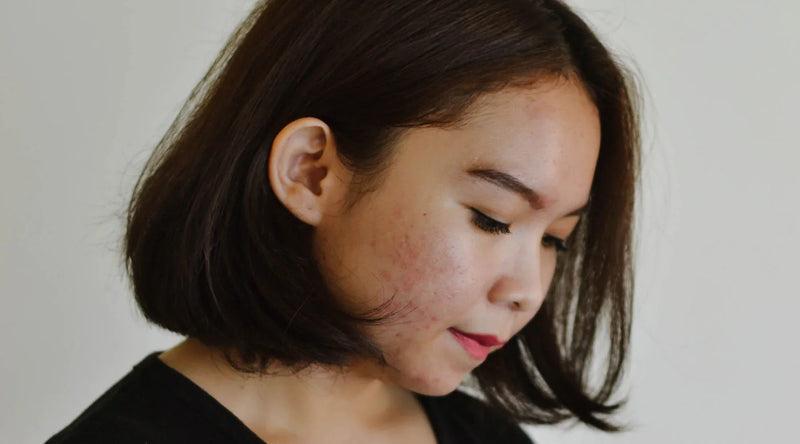
Understanding facial pimples in adults
Written on Feb.18.25 by Anne-Marie Gabelica - Updated on Feb.18.25
Why do I still have pimples on my face as an adult?
No, facial pimples on the face are not confined to adolescence and puberty. In fact, they're quite common thereafter... Among the many causes of facial pimples in adults :
Heredity
We don't know why, but in some people, the sebaceous glands can be a little too sensitive to the hormones that affect sebum production.It's even the number 1 cause of repeated blemishes in adulthood. Thanks, Mom and Dad!
Hormonal variations
A very common cause of pimples on the face in adult women. And the reason why women are more affected by acne than men.
The menstrual cycle, contraception and hormone treatments, and Polycystic Ovarian Syndrome (PCOS) are well-known causes ofhormonal acne. Pregnant women and perimenopausal women also frequently experience this joy.
Shortly before menstruation, the ovaries produce progesterone, which stimulates the activity of the sebaceous glands: the skin becomes clogged, becoming a breeding ground for imperfections. Not keeping track of your cycles? The appearance of a huge pimple on your lower face at least has the merit of warning you!
As for contraception, it's all one or the other. Combination or estrogen-progestin pills, which contain estrogen and an anti-male hormone progestin, tend to reduce acne. Those containing nortestosetrone, on the other hand, encourage the appearance of pimples. Don't panic: consider a change of contraception with your health professional⸱le, things should be back to normal within the year.
Adult acne in men
To each his own! Adult men, on the other hand, are prone to more severe forms of acne. While progesterone stimulates sebum production, their testosterone actually boosts it! The result: oilier skin and greater susceptibility to acne.
Also, pimples on the face of adult men are generally localized on the T-zone, linked to theaccumulation of sebum. And they are aggravated by shaving, which contributes to skin eruptions and inflammation of the hair follicles: folliculitis, which can be accompanied by papules (red pimples) and pustules ( white pimples containing pus).
A subject to be taken seriously: adult acne-prone skin. acne-prone skin are prone to developing deep inflammatory pimples, which can lead to complications and indelible scarring.
Stress
Stress spots on the face are common. Numerous nerve cells are located near the sebaceous glands and increase sebum production under the effect of cortisol (thestress hormone). Since acne itself is a source of stress, you've got a snake biting your own tail!
Contact acne
In many cases, adult acne is not caused by hormonal imbalances, but by skin contact with irritating substances or clumsy gestures.
This is contact acne, the most common forms of which are cosmetic acne, caused by unsuitable products, and chloracne, caused by exposure to chlorine in swimming pools, handling chemicals or in the bathroom.
Very often, it's bad habits that maintain and aggravate acne.
Pimples made worse by bad habits
False steps to avoid?
1. Unsuitable skin care
The golden rule in caring for your skin is to correctly identify your skin type: use our online skin diagnosis.
Because when you have pimples on your face, it's easy to conclude that you have oily skin. But imperfections and oily skin don't always go together.
The risk of applying cosmetics for oily skin on non-oily skin? Developing dryness, destabilizing skin pH, altering the cutaneous barrier and making skin more sensitive, reactive and prone to redness. And, ultimately, provoke the skin's own defense mechanisms. But do you know how our skin defends itself? By activating its production of sebum... thus encouraging the appearance or aggravation of imperfections, blackheads and pimples on the face. Ouch.
2. Overly aggressive cleaners
When it comes to pimples on the face, cleansing is a particularly sensitive issue. For two reasons:
1) When you're prone to blemishes, especially with oily skin, it's tempting to do things the hard way, in order to lighten the load. This is based on the false belief that skin needs to be purified, rid of sebum and deeply cleansed to breathe better and avoid clogged pores.
2) (Bad) facial cleansers, especially for oily skin, are among the most aggressive products for the skin.
So let's repeat it again and again: whatever your skin type, always opt for gentle cleansing. Even (especially?) for acne-prone skin. Forget about :
- cleansing products containing sulfated agents (SLES, SLS, sodium Lauryl /Laureth sulfate), which are highly effective for scrubbing garage floors, not for caring for your skin. They degrease EVERYTHING in their path, including the hydrolipidic film. Also beware of cleansers for acne-prone skin, sold in supermarkets and pharmacies alike, which replace them with other equally dubious surfactants: PEG 40, polysorbate, etc.
- exfoliating scrubs, particularly mechanical ones: grainy scrubs, exfoliating brushes, discs and sponges are very aggressive for the skin and often cause...mechanical acne ! If you're so inclined, enzymatic (chemical action) scrubs are already gentler. But they should only be used on regulated, soothed skin, and never on sensitive skin. A purifying, natural and organic detox mask, like our Smooth Operator, is a much better, gentler and more effective option.
3. Occlusive and comedogenic ingredients
In conventional cosmetics, most manufacturers use silicones, mineral oils and waxes (kerosene) in their creams to give the illusion of hydration. Illusion, because these cheap synthetic and/or petrochemical-derived ingredients do nothing for the skin: they simply deposit an inert, impermeable film that artificially retains water.
Worse still, they are occlusive and comedogenic : they clog pores and end up suffocating the skin. They also have a serious environmental impact when released into the environment via our washing water, as they are not biodegradable. All the more reason to banish them once and for all.
And don't think you can protect yourself against them with creams bought from parapharmacy or luxury brands: they love them just as much as supermarket brands!
4. Make-up - camouflage
When pimples bloom on the face, it's tempting to hide them under a thick layer of make-up. But it's a bad idea.
Conventional make-up, especially complexion products, is full of oils and waxes derived from petroleum, which are occlusive and comedogenic.
Our advice?
1) Choose mineral make-up, whose natural powders can even help you in your fight against pimples: zinc oxide is antibacterial, anti-inflammatory and aids healing, while Kaolin (white clay) is seboregulating.
2) Keep a light hand and apply a lightly tinted treatmentcream like our Spot Off under your make-up, with targeted action against pimples. It will accelerate their disappearance and help to circumscribe the affected areas.
5 tips for treating pimples on your face as an adult
Avoiding faux pas is good. Adopting the right reflexes to treat and even prevent pimples is even better!
The selection
1. Gentle, natural cleaning
The most effective cleansing duo is formed by a gentle, sulfate-free cleansing gel like our Gentle Angel and a hydrosol-based eau de soin, capable of countering the drying effects of limescale but also of acting on pimples and against skin aging: our Bloom Box.
Of course, if you're wearing make-up, don't skip the make-up removal stage: our Oil Right make-up removal oil is ideal for pimple-prone skin. Yes, an oil! Formulated with non-comedogenic, soothing and antioxidant oils, it removes even the most stubborn make-up without rubbing. Ideal for use on inflamed skin and to avoid irritating pimples.
A word of warning: use your fingers or washable make-up remover squares, but forget disposable cotton pads. Because they pollute, but also because of their chlorine bleaching and the risk of developing chlorine acne...
2. Choosing anti-blemish skincare products for adult skin
Skin prone to imperfections needs to be cleansed and soothed, to prevent the slightest blackhead from turning into a red, painful pimple or a white-tipped pustule, due to the development of bacteria. It therefore needs antibacterial and anti-inflammatory active ingredients, capable of accelerating healing and regulating excess sebum. That's a pretty hefty program.
But when you've got pimples on your face as an adult, you've got an added difficulty: you don't just have to fight against imperfections. Because, as we age, our epidermis has more intense needs: hydration, protection against cutaneous ageing... It's impossible to target ONLY pimples.
Of course, we can multiply the layers of products, but at oOlution we've decided to simplify the routine for adult skin prone to imperfections by formulating a balancing and plumping serum. Our Keen Tonic, thanks to a unique synergy of over 50 plants :
- moisturizes with non-comedogenic active ingredients: Natural Hyaluronic Acid, Marshmallow, Baobab...,
- regulates and purifies the epidermis for blemish-free skin, thanks to its balancing (Rosemary, Sage, Mimosa Tenuiflora, Petit Houx...) and astringent (Horsetail, Grapefruit, Hamamelis, Rosemary, Thyme....),
- prevents skin ageing with over 17 plants with anti-ageing (Spirulina, Macrocystis algae, Blackcurrant, Centella asiatica, Green Tea, Goji, ...) and plumping (Immortelle, Alfalfa...) properties.
In a single gesture, morning and/or evening, 2 or 3 drops of our targeted anti-imperfection plumping serum Keen Tonic answer your skin's main concerns!
What you say about Keen Tonic, our anti-blemish plumping serum
MY NEW ESSENTIAL!
I've just discovered this serum and I love it! It smoothes out my first little wrinkles but above all it's very effective for my hormonal acne, I have far fewer pimples and they disappear faster.
3. What to do if a lesion is already present?
Blackheads, or open comedones, provide an ideal breeding ground for bacteria. It's best to get rid of them with a well-sterilized blackhead remover (at the dermatologist' s or at home).
But pustules can appear without having gone through the blackhead stage: this is typically the sign of stressed, weakened skin. So what should you do? Avoiding scratching is a good start, as you'll only make things worse and risk indelible scarring. And don't try to dry them out by draining them, but rather purify them with our Spot Off.
As an emergency solution: a drop of essential oil mixed with a non-comedogenic vegetable oil, applied locally directly to the pimple, True Lavender or, especially, TeaTree. Its antibacterial and anti-inflammatory properties will soothe your skin and prevent the pimple from contaminating the rest of your skin. It's as effective as benzoyl peroxide, the powerful active ingredient in local anti-acne treatments, but without the risk of drying and burning!
4. An anti-blemish diet
Our diet is a powerful ally in skin health and beauty, particularly in the fight against pimples.
As with your natural cosmetics, opt for the right essential fatty acids. You'll find them in oleaginous fruits (walnuts, hazelnuts) and vegetable oils.
Certain trace elements are at the forefront of the fight against imperfections:
- selenium stimulates the immune system, in association with vitamin E: one Brazil nut is enough to cover our daily needs. You'll also find it in oysters, shrimps and sardines, eggs, dairy products, wholegrain cereals and legumes.
- Zinc from lentils, dried beans, mushrooms and GMO-free soybeans helps heal lesions.
5. Feel free to consult
Finally, some cases may require medical attention, with local treatment using retinoids, or even anti-inflammatory and antibiotic drugs.
If pimples on your face as an adult are ruining your life, if they're persistent, if they're getting worse, if you're developing severe acne or microcysts: consult us.
Similarly, if you suddenly have a lot of pimples on your face and/or fluid-filled vesicles: this could be the sign of an allergy or another health problem.
Whatever the case, our natural tips for care for adult skin prone to pimples will always be a very good complement 😉.
Recommended products
